MSK Pain and Prescribing Opioids

A new study published by the National Institutes of Health’s Journal of Pain reveals that first-time patients suffering from chronic MSK pain are prescribed opioids more often than non-drug treatments. Researchers analysed data from the National Ambulatory Medical Care Survey between 2007 and 2015. The data came from 11,994 visits over the 9-year period. …
Financial Impact of ERAS Programme
OR Today Magazine
Philip Corvo, MD, MA, FACS, and Wesley Knauft, MD
Enhanced Recovery After Surgery (ERAS)
is a paradigm shift in perioperative care that can benefit both hospitals and their patients. In this article published in OR Today by Philip Corvo, MD, MA, FACS, and Wesley Knauft, MD, they share a case study about their experience at Saint Mary’s Hospital, Trinity Health Of New England, a 347-bed acute care community teaching hospital in Waterbury, Connecticut, regarding the clinical and financial benefits of an ERAS programme that includes Ultrasound Guided Regional Anaesthesia (UGRA). Since the October 2015 launch of their opioid-sparing ERAS programme, there have been striking improvements in the safety and quality of care for patients undergoing colourectal surgery, along with substantial reductions in costs, complications, and opioid usage. Learn more about their specific results, including the millions of dollars saved and the quality measure achievements.
…
Medical Device Warranties: Fine Print, Major Total Cost Implications
Becker's Hospital CFO Report
Rich Fabian, Chief Operation Officer, FUJIFILM Sonosite
Most of us think of warranties as a way to save money because they reduce the possibility of spending money in the future. This article from FUJIFILM Sonosite’s Chief Operating Officer, Rich Fabian, outlines that not all warranties are created equal and this could have implications for the total cost of owning an ultrasound system over its lifetime. The article shares how the fine print of a warranty document can matter, particularly as it relates to what items are expected from the warranty. In the case of ultrasound systems, one area where the warranty can make a major difference in total cost of ownership is related to the replacement of the ultrasound machine’s probes. Reading the fine print in medical manufacturers’ warranties—and understanding how that fine print relates to those vendors’ confidence in their products—can reduce these hidden costs and the obvious headaches of owning poor quality equipment. Learn more by reading this article by Rich Fabian.
…
POCUS Goes Airborne for Helicopter Rescue
Emergency doctor Dr. Didier Moens is in charge of rescue missions in the Centre Médical Héliporté (CMH) of Bra sur Lienne, near Liège in Belgium. He believes access to point-of-care ultrasound (POCUS) on emergency helicopters is now essential for improving the care of critically ill patients: …
A Time to Reflect: Sonosite PX Celebrates a Year to Remember
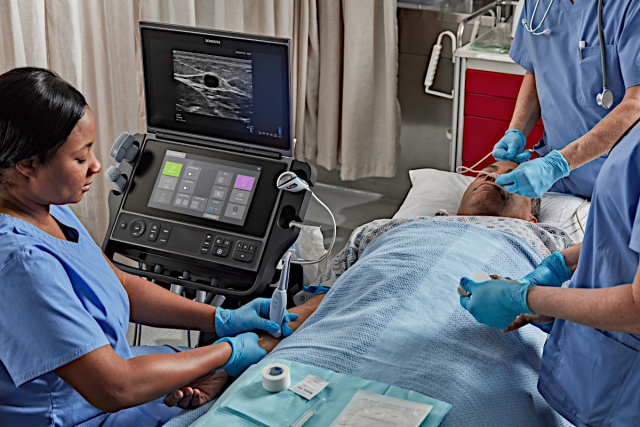
Anniversaries are times to celebrate, but also times to reflect. At FUJIFILM Sonosite, we’re thrilled to recognise the one-year anniversary of the launch of Sonosite PX, our next generation point-of-care ultrasound system (POCUS) with the most advanced image clarity ever seen in a Sonosite system. …
User Stories: Spreading Point-of-Care Ultrasound to the Philippines
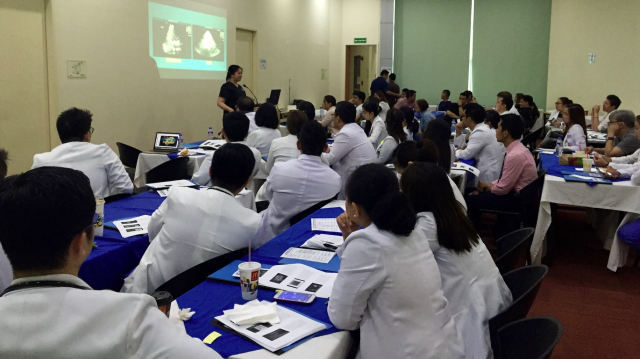
West Virginia University Department of Emergency Medicine Ultrasound fellow, Kristine S. Robinson, M.D. is taking Point of Care Ultrasound (PoCUS) to the international level by residing in Metro Manila, Philippines for a month, equipped with a Sonosite Edge machine from Sonosite’s Global Health Programme. …
POCUS Profile: Dr. Nathaniel Meuser-Herr

Pneumonia is a major cause of childhood mortality and morbidity globally – particularly in resource-poor environments – and diagnosis of pneumonia can be complex. The current gold standard diagnostic technique is a chest X-ray, looking for the presence or absence of areas of consolidation on the lungs. However X-ray facilities are not always available in remote locations. …
Consider All Ultrasound Machine Costs of Ownership
When making a high investment in medical equipment it is important not only to compare the price and quality of each product, in these cases it begins to be necessary to analyse the total cost of ownership (TCO) during the useful life of the equipment, since it could happen that the indirect costs exceed the sale price, plus all the additional problems that can even lead to damage to the reputation of the hospital. …
Setting Up a Point-of-Care Ultrasound Programme in the Neonatal Intensive Care Unit
Drawing on Dr. Jae Kim’s experience with implementing and leading POCUS programmes in two U.S. children’s hospitals, this article provides a five-step roadmap to adoption of this imaging modality to improve the safety and quality of care in the NICU. Physician training, the most active uses, and opportunities for POCUS in neonatal medicine and case examples are discussed. The article also provides guidance on selecting a point-of-care ultrasound system for neonatology.
…
Solving revenue capture for POCUS – The importance of workflow management
HealthCare Business News sat down with Dr. John Hipskind, ultrasound GME director and ultrasound fellowship director at Kaweah Delta Medical Centre, one of the first sites to use Sonosite Synchronicity™ workflow manager. Dr. Hipskind discusses the advantages of point-of-care ultrasound, from reducing phantom scans, to easing credentialing and QA processes, and improving revenue at his facility.
…
POCUS Profile: Dr. Pradeep Suryawanshi
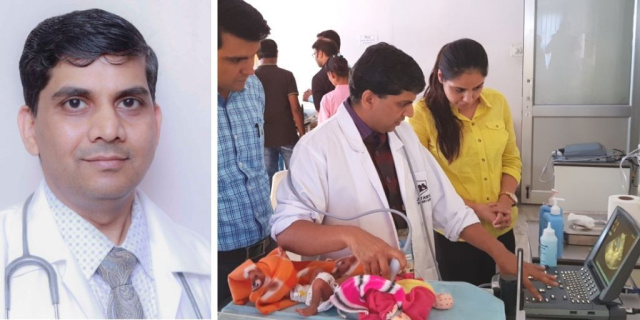
Dr. Pradeep Suryawanshi, Professor & Head, Department of Neonatology at BVU Medical College, Pune, India has 15 years of experience in field of neonatology. He is the first person to commence point-of-care neonatal ultrasound and neonatal functional echocardiography courses in India. He recently shared his views about how the use of point-of-care ultrasound has made a significant impact in his routine clinical practise. …
Ready to Face the Pandemic: Sonosite PX Launches in a Moment of Crisis
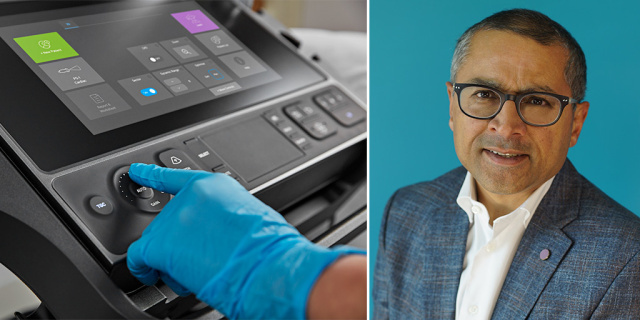
This July, FUJIFILM Sonosite launched Sonosite PX, its newest ultrasound system, in the midst of the COVID-19 pandemic. Diku Mandavia, M.D., Chief Medical Officer of FUJIFILM Sonosite, sat down with sonographer and Sonosite’s Director of Marketing Development Jodi Miller to discuss how Sonosite’s newest ultrasound system can help frontline health care workers combat the pandemic and why Sonosite PX is uniquely suited for this global health crisis. …
Ultrasound Critical for Women's Health in Sierra Leone
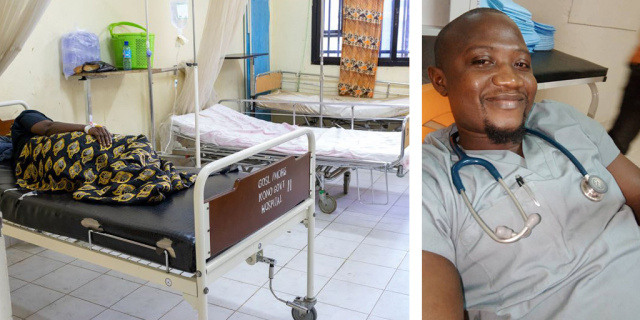
The mission of Partners in Health (PIH) is to provide a preferential option for the underprivileged in health care. By establishing long-term relationships with sister organisations, PIH strives to bring the benefits of modern medical science to those most in need of them. …
POCUS PROFILE: Dr Amjad Maniar

Dr. Amjad Maniar is a consultant anaesthesiologist at People Tree Hospital in Bengaluru, India. He spoke with Sonosite about his journey from using landmark techniques to ultrasound-guided regional anaesthesia. …
Radiologist Brings Ultrasound to the Barrios
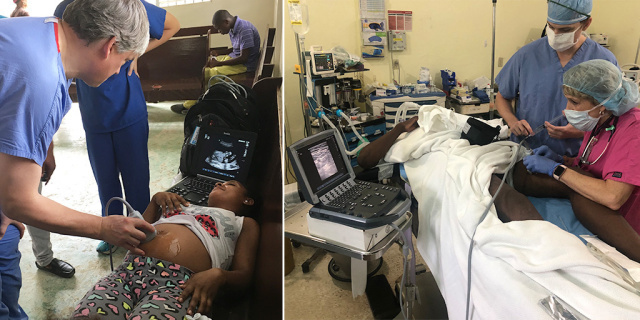
Dr. David Johnsen is a diagnostic radiologist working with medical missions to the Dominican Republic. His team borrowed a Sonosite M-Turbo through Sonosite’s Global Loaner Programme for a recent mission. Dr. Johnsen submitted this report of his experiences in the Caribbean country. …
POCUS Profile: Dr. Fabith Moideen
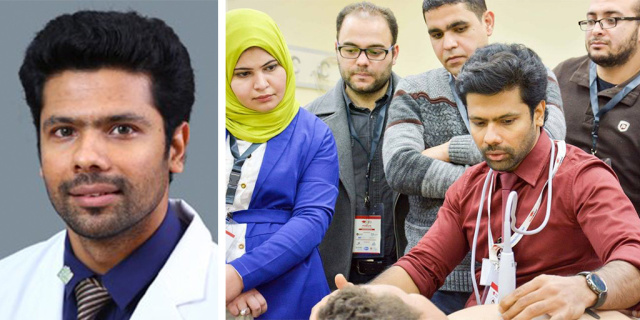
Dr. Fabith Moideen, Chief of Emergency Medicine department at Baby Memorial Hospital, Kozhikode, Kerala, India has worked for 13 years in emergency medicine. Dr. Moideen recently shared his journey with point-of-care ultrasound (POCUS) and its importance in routine clinical practise. …
Diving Deep with POCUS: Ultrasound and Air Embolism
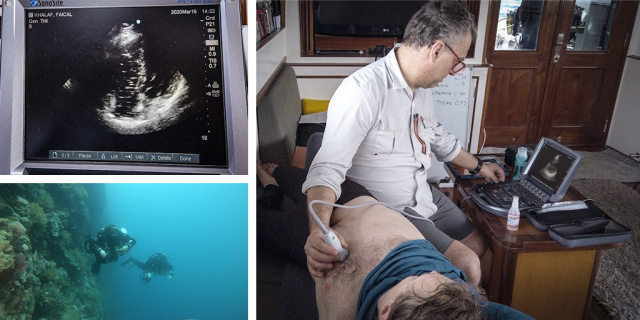
Costantino Balestra, Professor of Physiology at Haute Ecole Bruxelles-Brabant in Belgium, uses point-of-care ultrasound (POCUS) in environments that could not be more different from a typical hospital setting. His expertise lies in studying the effects of extreme conditions on the human body, including temperatures, altitudes, and ambient pressures found in deep oceans. …
Emergency Physician Uses Sonosite M-Turbo for Education Exchange in Guatemala
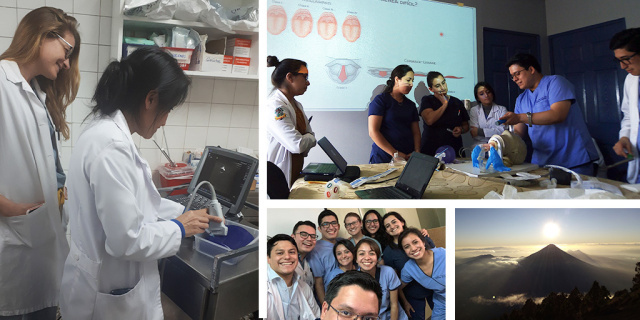
University of Washington/Harbourview Medical Centre emergency medicine physician Emily Bartlett, MD, MS, traveled to Guatemala City in 2019 for a recently established emergency medicine programme. The trip was focused on educational exchange and professional development for programme residents. Dr. Bartlett borrowed a Sonosite M-Turbo for this trip, and sent us this report. …
Sharing Critical Ultrasound Knowledge in Eritrea
Emergency room consultant Norbert Pfeufer, MBA, has developed and organized ultrasound workshops for anesthetists in Eritrea, Africa, for a number of years. This has helped to support doctors in the area that are faced with many daily challenges, including language barriers and a lack of resources. Pfeufer explains: …

